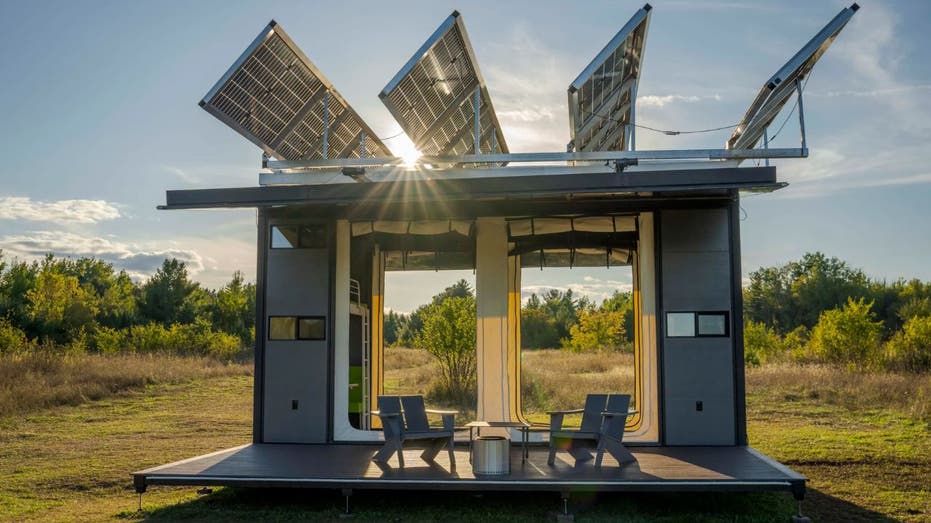- by foxnews
- 05 Apr 2025
Smart windows take a page from nature's pinecone playbook
An innovative new window system keeps your home comfortable without using a single watt of electricity and could change the way we think about energy efficiency in buildings.
- by foxnews
- 07 Feb 2025
- in technology

Now, researchers have taken this cue from nature to create something pretty cool for our homes.
Let's dive into how this revolutionary window technology works, keeping your home comfortable without using a single watt of electricity.
The Solar Gate system consists of a gridded array of pine-cone-scale-inspired self-bending elements housed between two panes of glass in an aluminum-frame window unit. Each element is ingeniously crafted with three distinct layers, each serving a unique purpose. The bottom layer is composed of a cellulose powder and a thermoplastic blend that swells when exposed to moisture. Above this lies a middle layer made of thermoplastic, which remains unaffected by moisture.
The Solar Gate system underwent rigorous real-world testing to prove its effectiveness. In a comprehensive year-long study, researchers installed 424 Solar Gate elements in the south-facing skylight of a research building at the University of Freiburg. The results of this extensive trial were nothing short of impressive.
During the cool, wet winter months, the elements responded by curling upwards, allowing ample sunlight to penetrate the building. This natural response effectively warmed and illuminated the interior spaces, reducing the need for artificial heating and lighting. Conversely, as the seasons changed and brought warmer, drier summer conditions, the elements automatically flattened out.
This flattening action served to block excess sunlight, effectively keeping the building's interior cool and comfortable without the need for energy-intensive air conditioning. The test demonstrated the system's ability to autonomously adapt to changing weather conditions, providing optimal comfort and energy efficiency throughout the year.
This innovative approach to building technology has far-reaching implications beyond just window systems. Researchers have already begun exploring similar biomimetic principles in a variety of applications. For instance, studies have investigated the development of shading systems using wooden slats that can open and close in response to environmental conditions.
In the realm of textiles, scientists are working on "smart" clothing fabrics that can adapt to ambient temperature, providing optimal comfort for wearers. Perhaps most intriguingly, these principles are even being applied to the field of robotics, with researchers developing tiny mobile robots that can respond to environmental stimuli in ways inspired by natural mechanisms. As we continue to draw inspiration from nature's ingenious designs, the potential for creating more sustainable and responsive technologies seems boundless.
Nature never ceases to amaze us with its ingenious solutions, and the Solar Gate window system is a brilliant example of how we can harness these natural wonders. By mimicking the pinecone, scientists have created a game-changing technology that could revolutionize how we approach energy efficiency in our buildings. It's exciting to think about a future where our homes and offices adapt to the environment just like living organisms do. Who knew that the key to smarter buildings was hiding in our forests all along?
Follow Kurt on his social channels:
Answers to the most asked CyberGuy questions:
New from Kurt:
Copyright 2025 CyberGuy.com. All rights reserved.
- by foxnews
- descember 09, 2016
Excavation near site where Jesus was crucified and buried results in ancient discovery
Proof of ancient olive trees and grapevines, consistent with a Bible verse, has been found at the Church of the Holy Sepulchre in Jerusalem, an archaeologist confirms.
read more





